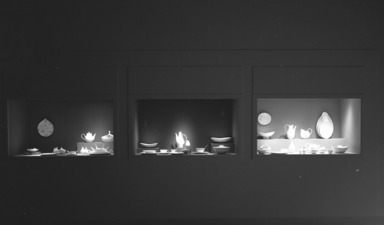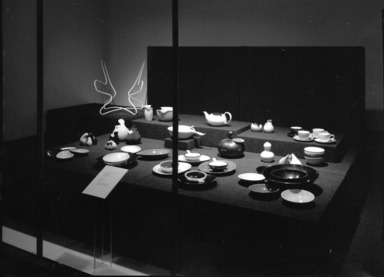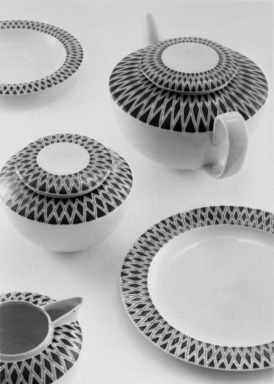

Eva Zeisel: Designer for Industry, October 06, 1984 through November 16, 1984 (Image: PHO_E1984i065.jpg Brooklyn Museum photograph, 1984)

Eva Zeisel: Designer for Industry, October 06, 1984 through November 16, 1984 (Image: PHO_E1984i066.jpg Brooklyn Museum photograph, 1984)

Eva Zeisel: Designer for Industry, October 06, 1984 through November 16, 1984 (Image: PHO_E1984i067.jpg Brooklyn Museum photograph, 1984)

Eva Zeisel: Designer for Industry, October 06, 1984 through November 16, 1984 (Image: PHO_E1984i068.jpg Brooklyn Museum photograph, 1984)
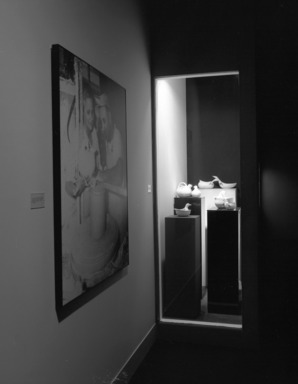
Eva Zeisel: Designer for Industry, October 06, 1984 through November 16, 1984 (Image: PHO_E1984i069.jpg Brooklyn Museum photograph, 1984)

Eva Zeisel: Designer for Industry, October 06, 1984 through November 16, 1984 (Image: PHO_E1984i070.jpg Brooklyn Museum photograph, 1984)

Eva Zeisel: Designer for Industry, October 06, 1984 through November 16, 1984 (Image: PHO_E1984i071.jpg Brooklyn Museum photograph, 1984)
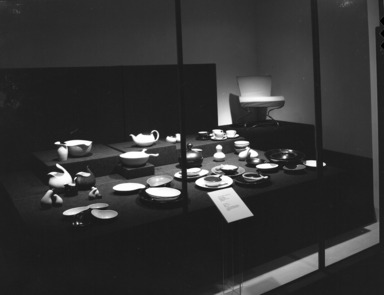
Eva Zeisel: Designer for Industry, October 06, 1984 through November 16, 1984 (Image: PHO_E1984i072.jpg Brooklyn Museum photograph, 1984)

Eva Zeisel: Designer for Industry, October 06, 1984 through November 16, 1984 (Image: PHO_E1984i073.jpg Brooklyn Museum photograph, 1984)
Eva Zeisel: Designer for Industry
-
October 6, 1984
“EVA ZEISEL: DESIGNER FOR INDUSTRY,” a retrospective exhibition of one of the leading pioneers of twentieth century ceramic design, will open at the Brooklyn Museum on October 6 and be on view through November 16, 1984.
The exhibition, consisting of 154 pieces of tableware, spans a period between 1925 and 1984 and will include examples of Eva Zeisel’s work produced in Hungary, Germany, the USSR, the United States, Italy and Japan. Her place in the history of twentieth century art is established and secure. It rests on over fifty years of creative effort, during which she has produced innumerable designs for mass-produced tableware. It is crowned by a single design -- Castleton China’s “Museum” dinner service (1942-43) -- which stands as one of the most beautiful and influential achievements of modern design.
Zeisel’s life as a designer has been a remarkable one. Abandoning the study of painting at Budapest’s Royal Academy of Fine Arts, she sought the simple life of the craftsperson, eventually starting her own pottery. Her early work even garnered an honorable mention at the Philadelphia Sesquicentennial Exhibition of 1926. But she soon renounced what she described as “the pretense of the simple life” and devoted herself to the design of ceramics for mass-production. After great success in Germany during the twenties and early thirties, she moved to Russia where she was appointed to the important post of Art Director of the China Industry of the Republic of Russia.
With the changing political climate in Europe she emigrated to the United States where, in 1939, she began teaching “Ceramic Design for Mass-Production” at Brooklyn’s Pratt Institute, a course of study that would profoundly influence generations of American designers.
Her star continued to rise when, in 1942, she became the first person ever to be commissioned by the Museum of Modern Art to design a line of tableware, dubbed “Museum”. In 1946, MoMA honored Eva Zeisel with a one-person exhibition and Castleton China began mass-production of her “Museum” tableware. The 1940s and 1950s became her period of greatest reknown and included exhibition of her work at The Brooklyn Museum and the Akron Art Institute, among others. In 1952 she designed “Hallcraft,” produced by Hall China, one of the largest-selling lines of modern tableware ever produced.
Although very much a part of the “Good Design” movement of the postwar period, Zeisel was by no means a strict functionalist. Her work displays a great sense of humanism--the sense that objects should be easy for people to use and handle, look well on shelf or table, stand up to everyday wear, and give pleasure to their owners--that distinguished her from so many of her contemporaries and that accounts for the rare esteem, she enjoys among artists, consumers, and manufacturers alike. Zeisel’s work is represented in the collections of The Brooklyn Museum, MoMA, and the Victoria and Albert Museum in London.
“Eva Zeisel: Designer for Industry” was organized by the Museum of Decorative Arts of Montreal, Canada, and will be circulated to museums in Chicago, St. Louis and Providence by the Smithsonian Institution Traveling Exhibition Service (SITES). The Brooklyn Museum’s showing of the exhibition, coordinated by Christopher Wilk, Assistant Curator of Decorative Arts, will be its premiere, and will be supplemented by examples of Zeisel’s work not included in the North American tour. This venue was funded in part by a grant from the National Endowment for the Arts. A fully-illustrated catalogue distributed by the University of Chicago Press will accompany the exhibition.
Brooklyn Museum Archives. Records of the Department of Public Information. Press releases, 1971 - 1988. 1984, 023-24.
View Original
